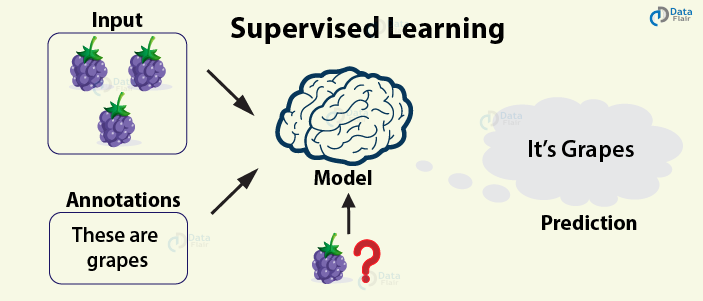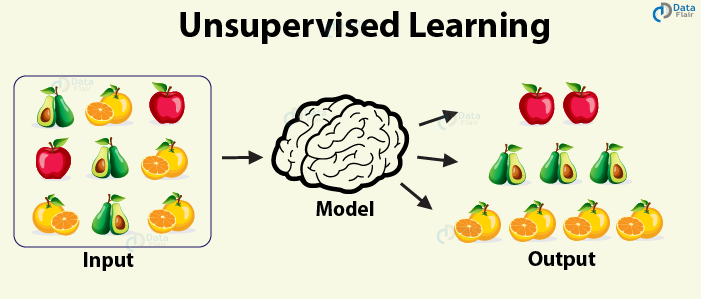Best Way to Learn Machine Learning – 7 Easy Steps to become Expert
Free Machine Learning courses with 130+ real-time projects Start Now!!
Machine learning is the new electricity of the IT industry. It is the science of getting things done with the help of intelligent machines. It is a concept wherein computers uses a set of algorithms and techniques to make decisions and predictions from available data.
Machine learning is changing the world. It is being used in a number of sectors such as science, healthcare, production, retail, telecom, etc.
Let’s quickly check the best way to get started with machine learning.
Steps to Learn Machine Learning
Let’s explore the easiest way to learn machine learning in the form of steps:
1. Start with the Basics of Mathematics
Having a solid foundation in mathematics is necessary to start your journey in machine learning. This helps in achieving a better understanding of machine learning algorithms.
Major concepts to cover in mathematics are:
a. Linear algebra
Linear algebra may be a sub-field of mathematics concerned with vectors, matrices, and linear transforms. It’s a key foundation to the sector of machine learning, from notations wont to describe the operation of algorithms to the implementation of algorithms in code. This helps in representing data as linear equations.
Learn the concepts of algebra, radicals, graphical linear equations, how to perform operations on a slope, factoring, matrix analysis, etc.
Algebra is actually used to find real-life variable and solving them. It is used in recommendation systems and facial recognition. Representation of data is done by the help of matrices learned in linear algebra.
b. Calculus
Maxima & Minima, Functions of single & multiple variables, and partial derivatives are some important topics of calculus to cover. It is used to study variables and how they change.
Knowledge of calculus is required to build many machine learning techniques and applications.
For example – You’ll need to calculate derivatives and gradients for optimization of models.
c. Probability
Probability may be a field of mathematics that quantifies uncertainty. It’s undeniably a pillar of the sector of machine learning, and lots of recommend it as a prerequisite subject to review before getting started. It is the key area of mathematics for the collection and analysis of data in the machine learning field.
The concept of probability is, it is a measure of the chance that an event is going to occur. You need to derive insights from the available data, and for this purpose, you need to understand probability.
Usually, probability and statistics are something that you need to study together. A combination of both of these skills is required to become a machine learning expert as they provide you with knowledge of what type of data analysis is required.
2. Statistics
Statistical techniques and methods are needed to handle the data. It is divided into two categories:
a. Descriptive Statistics
Descriptive statistics is required to describe and summarize the data available with you so that you can make decisions on what type of data analysis tool can be used to interpret the outcomes.
Topics to cover in descriptive statistics are – Central Tendency, Normal Distribution, Variability, and Sampling Distributions.
b. Inferential Statistics
Inferential statistics help you to draw out inferences and conclusions after the analysis of data. Topics you’ll have to study to give conclusions are – Estimation, Hypothesis testing, ANOVA, Correlation, Regression, etc. This technique is applied over a smaller sample and imply it over the larger group.
3. Machine Learning Algorithms
ML algorithms are built-in machine learning that can learn and make predictions from the data. These are divided into 3 groups:
a. Supervised Learning
A model is prepared with the help of the available data (known/labeled value) and predictions are made on the basis of the model. If the predictions are wrong, the model is updated and predictions are corrected. This process continues until the model achieves a desired level of accuracy on the data.
b. Unsupervised Learning
A model is prepared without the help of any known or labeled data. So connections are found between non-assigned datasets. The machine does this through patterns, trends, and similarities between available data.
Clustering and association methods are examples that help in unsupervised machine learning.
c. Reinforcement Learning
Reinforcement learning falls between the above mentioned two algorithms, so it is also called semi-supervised learning. It uses a small amount of known input data and supports a large amount of unlabeled input data (like sampling method). It helps to provide feedback on the best method for making predictions.
4. Programming Languages
There is no one programming language that can cover the complete work in machine learning. So language is preferred on the basis of the project you are working on.
Programming languages help you to code your problems in a language that is easily understood by the machine. A few languages to start with are – Python, Java, R, and Scala. Python is the most popular programming language used for machine learning projects.
5. Data Wrangling and Analysis
Without data, there is no machine learning, data science, or big data. Both, the experts and beginners should know that Data is the King. A well-structured data can allow us to perform complex algorithms very easily (only if you know how to).
The process of data analysis involves the collection, cleaning or wrangling, storage, analysis, and at the last visualization of the data.
You need to learn the various data visualization tools to analyze and graphically represent the data.
QlikView, QlikSense, SAS visual analytics, D3.js, ggplot2, etc. are some of the most used tools for data visualization in machine learning.
6. Refer Machine Learning Books and Communities
As it is said – Books are your best friends.
Read books in your free time and increase your technical knowledge.
Remember, learning is a continuous process because, except that, you’ll need to cycle your way back and review concepts to work. Also, participate actively in the machine learning communities. It will help you to increase your network and know the views of machine learning experts. Thus, boosting your knowledge of technology.
7. Work on Real-time Machine Learning Projects
- Focus on Targeted Practice – This involves the usage of specific and concise exercises to sharpen your skills.
- Practice the Overall ML Workflow – Start from data collection, cleaning, and preprocessing. Then move onto building models from the data and evaluate them on the basis of your problems.
- Practice on Real Datasets – Choose the kind of data that is appropriate for a particular challenge and apply the algorithm which will be best suited for the problem.
Summary
If you have followed all these steps to learn machine learning and practiced with a real project, you’re now ready to take on the world!
Just kidding. You learned 90% of machine learning but still, there’s still much more to learn such as – Deep Learning, Computer Vision, Natural Language Processing, etc.
The key to becoming an expert in the field is to never stop learning.
You give me 15 seconds I promise you best tutorials
Please share your happy experience on Google





There are websites on ML as many as stars on the sky. I think, I found the North Star for guidance for taking a trip to unknown territory. At a first glance, your website sounds promising. Let me try it out. Thanks